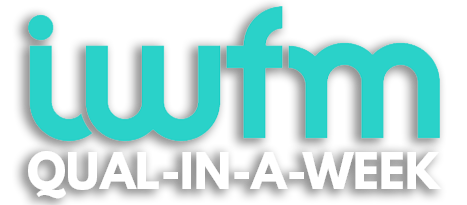Hi,
This week we’re continuing our series on completing a Health and Safety Risk Assessment by taking a closer look at the first stage in the 5-step process – Identifying Hazards.
Just as a heads-up, the content for this series is adapted from one of the courses on XenZone. XenZone is a library of bitesize courses designed specifically for Facilities Managers. It’s the only one of its kind in the world, offering subscribers unlimited access to an ever growing selection of interactive online courses covering a range of topics relevant to aspiring FMs.
XenZone will launch on 16th October, but in the meantime you can join the waiting list for exclusive updates on progress and reminders as we approach the launch date. Just click on the button below and you’ll be taken to a pre-populated form that will allow you to add your details to the list.
So, now that you’ve joined the list (you have joined the list, right?), it’s on to today’s topic.
Identifying Hazards
As you will recall from last week, a the first step towards completing a Health and Safety Risk Assessment is to identify potential hazards. But before we can do this, we need to know what a hazard actually is.
Under UK Health and Safety legislation, a hazard is defined as anything that has the potential to cause harm. Hazards can be divided into 5 categories.
• Physical hazards (e.g., machinery, electricity, heights, noise, or radiation)
• Chemical hazards (e.g., exposure to harmful chemicals or substances)
• Biological hazards (e.g., bacteria, viruses, or other microorganisms)
• Ergonomic hazards (e.g., repetitive strain injuries or poor workstation design)
• Psychological hazards (e.g., stress, workplace violence, or harassment)
Any of these have the potential to cause harm and each of them, where relevant to your workplace, need to be assessed for the level of risk that they present.
So how do we go about identifying which hazards exist in our workplace?
There are a number of ways we can go about this.
Manufacturer’s Instructions
The instructions provided by manufacturers, including datasheets, information and guidance, will often provide information about any potential hazards associated with an asset.
Observation
A walk round of the site we are assessing will enable us to identify potential hazards such as trailing cables or uneven floor surfaces. We need to make a note of everything we see that could potentially cause an accident.
Staff Consultations
We could ask employees working in the area we are assessing what aspects of the working environment they feel may present a risk. A classic example here would be undertaking a display screen equipment assessment. Individual staff members will be able to identify both existing and potential issues with their workspace. Staff consultations can also be useful as a way of identifying psychological hazards such as stress caused by poor management or bullying.
Reviewing Previous Accidents, Incidents and Near Misses
Unlike the previous methods, which are proactive in their approach, this is a more reactive way of identifying hazards. Sometimes, even with a comprehensive approach to identifying and managing workplace risk, we may miss something and an accident or near miss may occur as a result. Although this is not an ideal scenario, it does allow us to identify another hazard and conduct a risk assessment as a result. This can also be a useful method when you begin a new role and need to get a handle on their current level of Health and Safety provisions.
And that’s all we’ve got time for this week. We’d love to know if you have any other ideas about identifying hazards which we can share. Feel free to reply to this e-mail with any suggestions you may have.
Before I go, just a quick reminder – if you’d like to take your FM development to another level and get an accredited qualification to prove it, but you’re worried about the time you’ll need to commit to achieve this, we still have spaces available for our IWFM Level 4 Award Qual-in-a-Week intensive course in November. It’s one week out of the office with no distractions and all assessments carried out as you progress. You can turn up on day one and walk away on day 5 having completed all of the learning and assessment required to achieve your Level 4 Award. Sound interesting?
You can find out more and enrol here
And don’t forget to join the waiting list for the XenZone training library and stay up to date on our progress to launch.
Have a great week!
Chris and the Xenon Team
P.S. If you haven’t already studied or started studying for an IWFM qualification, which will cover topics like this in depth and fully assess your understanding, you may want to have a look at our guide to the IWFM Qualifications which will give you a full breakdown of how they work and what’s involved in the different levels. You can download it here.
P.P.S. If you’re already considering taking a qualification but don’t know which level to go for, a good starting point is our One-Minute-Leveller tool, which will ask you a few questions and give you a recommendation based on the result. You can access it here.
P.P.P.S. Don’t forget you can read all of the previous issues on our website. If you’re new to the mailing list or you want to revisit an earlier issue without digging through your inbox, you can find all of our past issues in the Vault.



